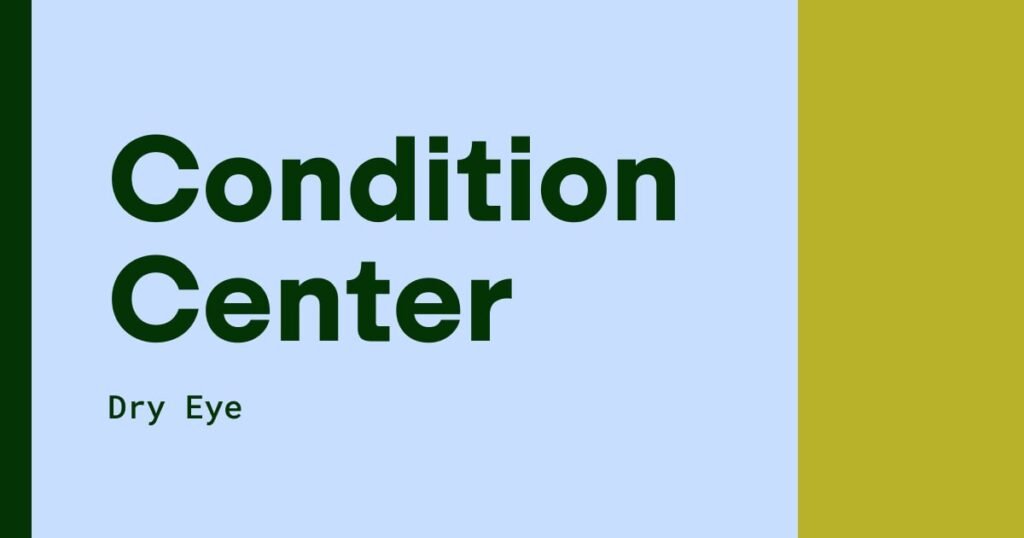Most people don’t spend much time thinking about their eyes until something goes wrong, and then it’s difficult to think about anything else. Dry eye syndrome is one of those problems that is difficult to ignore, causing uncomfortable symptoms such as dry eyes, itchiness, and blurred vision.
“Dry eye is a multifactorial disease process,” said Mina Massaro-Giordano, MD, co-director of the Dry Eye and Ocular Surface Center at Penn State and professor of clinical ophthalmology at Penn State. “This can be very uncomfortable for patients.” Here, we cover what you need to know about dry eye, including its main symptoms, causes, and how to relieve it.
Experts featured in this article:
Mina Massara-Giordano, MD, is co-director of the Dry Eye and Ocular Surface Center at Penn State.
Mohammad Dastjerdi, MD, is a corneal and external disease specialist at Rutgers Health.
Danielle Orr, OD, is director of the Advanced Eye Care Clinic at The Ohio State University College of Optometry.
Vivian Shibayama, OD, is an optometrist at UCLA Health.
What is dry eye syndrome?
Dry eye syndrome is a condition that occurs when your eyes don’t produce enough tears or when your tears don’t work properly, according to the National Eye Institute. “Additionally, certain conditions can cause tears to evaporate from the surface of the eye more quickly than normal,” says Mohammad Dastjedi, MD, a cornea and external disease specialist at Rutgers Health. “Tears are essential for eye health as they keep them moist, clear and comfortable.”
Dry eye syndrome can cause a range of uncomfortable symptoms and can even lead to difficulty seeing. Unfortunately, nearly 16 million Americans suffer from this disease.
Signs and symptoms of dry eye syndrome
However, dry eye syndrome is more than just dry eyes. According to Dr. Massaro-Giordano, the following symptoms are also common:
That said, everyone goes through different situations. “Some patients report that their eyes feel dry, while others complain that their eyes water too much,” said Danielle Orr, director of the Advanced Eye Care Clinic at The Ohio State University College of Optometry. While extra tears seem to help, they “are often not of high quality, so the eyes stay dry, creating a vicious cycle,” Dr.
What are the causes of dry eye syndrome?
At the heart of dry eye syndrome is a tear problem. “Tears are not as simple as people think,” Dr. Orr said. “Tears have different layers and are produced by glands and structures on the surface of our eyes and eyelids. Dry eye syndrome is caused by insufficient tear production, changes in tear composition, or both.”
But there are several potential causes of dry eye syndrome. Dr. Dastjerdi breaks it down:
- age. Tear production typically decreases with age, making older adults more susceptible to dry eye syndrome.
- environmental factors. Wind, smoke, dry weather or prolonged screen time can cause tears to evaporate.
- Meibomian gland dysfunction. Blockage or dysfunction of the eyelid oil glands (called meibomian glands) can lead to poor tear film quality.
- Medication. Some medications, such as antihistamines, antidepressants, blood pressure medications, and decongestants, can reduce tear production.
- Autoimmune diseases. Conditions such as Sjogren’s disease, rheumatoid arthritis, and lupus reduce tear production.
- contact lenses. Wearing contact lenses for a long time can damage the tear film and cause dryness.
- Hormonal changes. Changes during pregnancy, menopause, or using birth control pills can affect tear production.
- Eye surgery. Surgery like LASIK can sometimes affect tear production and cause temporary or long-term dry eyes.
How is dry eye syndrome diagnosed?
Dry eye syndrome is diagnosed through a comprehensive dilated eye exam. “Through a microscope, we can measure tear volume and tear evaporation rate,” said Vivian Shibayama, an optometrist at UCLA Health. “There’s also a test called the Schirmer test where we use paper strips to measure your tear production.”
How is dry eye treated?
Treatment may vary based on patient needs. “In my experience, the most effective dry eye treatment often depends on the underlying cause and severity of the condition,” says Dr. Dastjerdi. Treatment usually takes a “step-by-step approach,” Dr. Orr said.
This means starting with lubricating artificial tears and good eyelid hygiene. “Changing the environment can help, such as not having a fan blowing directly in your face while sleeping, or taking breaks while using the computer,” she says.
According to Dr. Orr, some people need prescription eye drops such as cyclosporine (Restasis, Cequa) or lifitegrast (Xiidra). “There is also a nasal spray, varenicline (Tyrvaya), which stimulates tear production.”
A punctal plug is a small device that is inserted into the tear duct and can be placed in the tear drainage system to keep tears on the eye longer, Dr. Orr said. “In severe cases, autologous serum drops can be prepared from the patient’s own blood to provide additional nutrients and growth factors,” she told PS.
Dr. Shibayama says that if someone is dealing with meibomian gland dysfunction, heat compresses, an in-office procedure to squeeze the oil out of the glands, and lubricants that contain oil may help. Specialty contact lenses can also be used to “bath” the surface of the eye in a solution, Dr. Orr said.
“It’s important to know that none of these treatments cure dry eye,” Dr. Orr said. “Treatments are often given over a long period of time and are combined with the goal of controlling the symptoms of this chronic disease.”
Doctors say if you’re struggling with symptoms of dry eye, it’s important to get checked out. “You need someone to check your eyes,” Dr. Massaro-Giordano said. “A lot of times people come in thinking they have dry eyes and it’s just allergies.”
Korin Miller is a writer specializing in general health, wellness, and lifestyle trends. Her work has been published in Women’s Health, Self, Health, Forbes, and other magazines.

